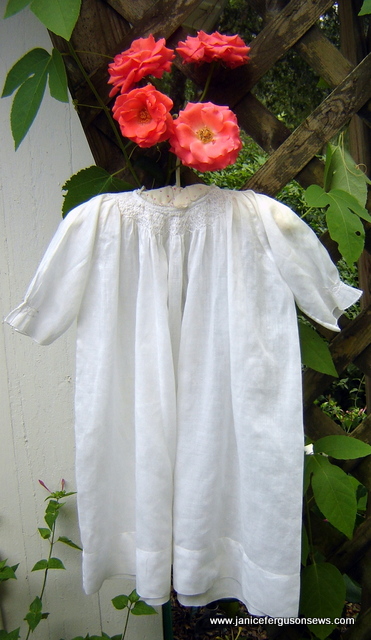
Well loved daygowns and roses are two of my favorite things. This Bright Future climber had a 5th rose in this cluster.
At first glance, this antique daygown is sweet but offers nothing noteworthy. Upon closer examination, however, there are techniques and features that make me wish I knew more about it. I bought it on eBay for reasons I don’t remember.
One of the first things that caught my attention is the pale, pale pink smocking (probably faded with time) which appears to have been stitched without the benefit of a pleater. It seems unlikely that iron on dots were used, as the gossamer sheer fabric likely would have refused to surrender this intrusion, even after multiple launderings.
So it would seem that the pleats were formed by the older method of “picking,” simply piercing a few threads with a needle and thread. The fact that the circumference of the skirt measures only 46″ shows that the smocking is indeed very loose.
Then I noticed that there is only one side seam, but also a center back seam. The needleworker who made this dress used the 36″ width of fabric, which was standard before today’s 42-25″ widths came available. She then added a 12″ piece that extends from one side seam to the center back. Two French seams used up the 1-1/2″ difference.
The neckline finish is also something I’ve never seen, though Old Fashioned Baby‘s Jeannie B. would certainly recognize it. The bias binding has been pulled to the inside, leaving the gathers exposed. Apparently, the top cable row was smocked after the binding was applied and then baby lace edging was whipped to the binding.
The most intriguing feature is the sleeve finish. I doubt the pictures, including a scan, give enough detail for you to appreciate the delicacy and beauty of this edge.
It appears to have been rolled and whipped—but soooo tiny a roll!–with a little picot applied during the process. The thread makes my beloved Madeira Cotona 80 weight look like clothesline rope. Have you ever seen this? Do you know how it is done?
The last notable feature of the dress is the machine stitched hem. After taking the time to smock the dress and put all the time into the sleeve edges, why would a machine stitched hem seem like a good idea?
Maybe the baby came early and she just had to finish it. Maybe someone else finished it for her. Wondering about the lady who smocked this dress so long ago and others like her is one of the reasons I so enjoy vintage/antique textiles.
If you have any insight regarding this garment or my questions, I would really appreciate hearing from you. Meanwhile, doesn’t it make you want to go cut out a daygown?

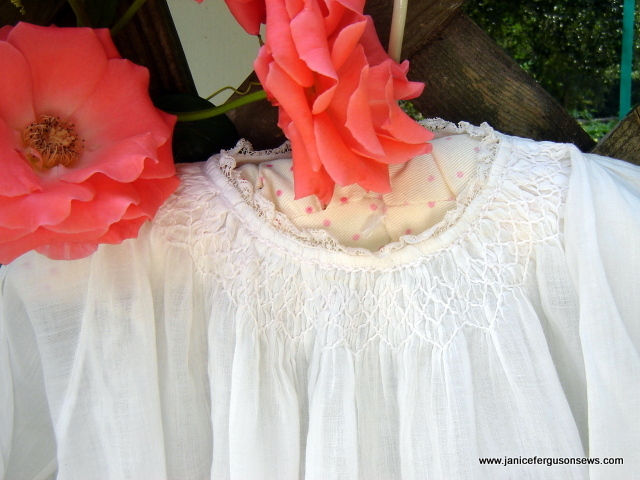
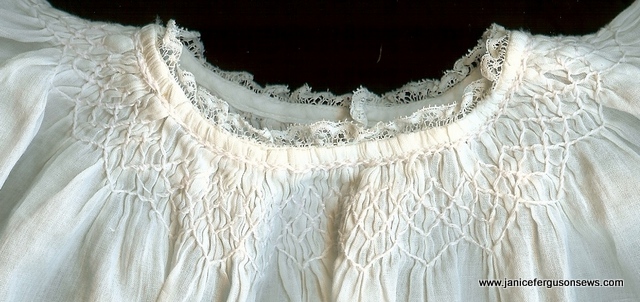
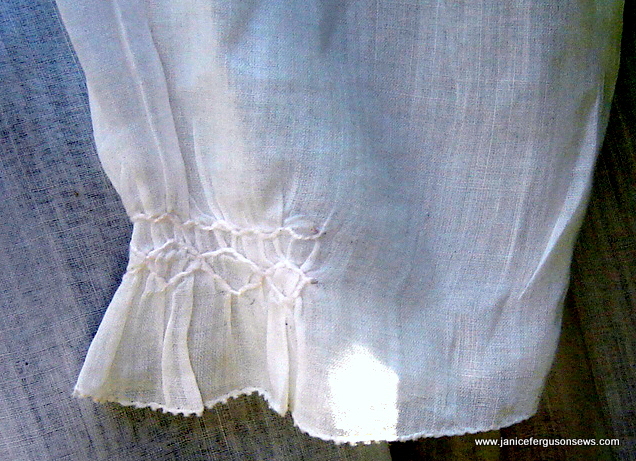
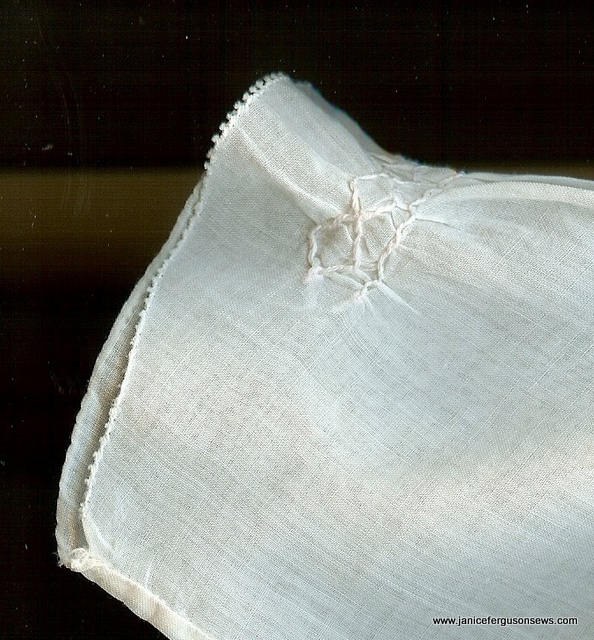

4 responses to “Unique Techniques ~ Vintage Daygown”